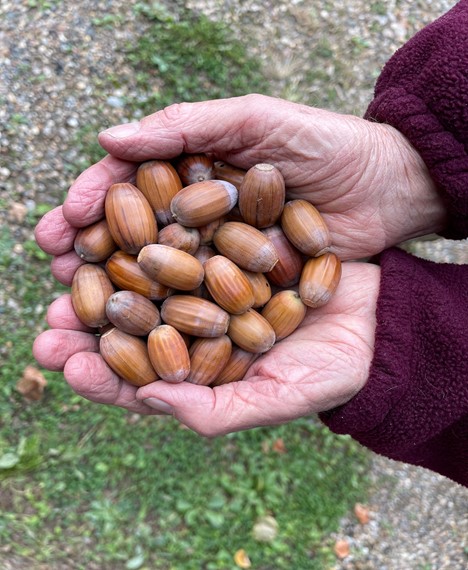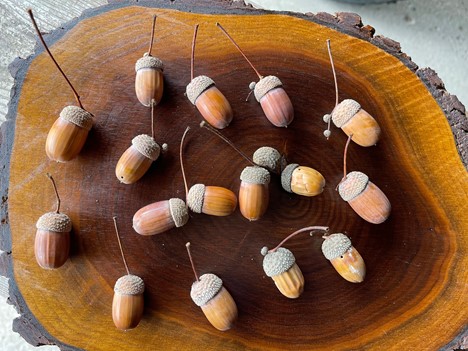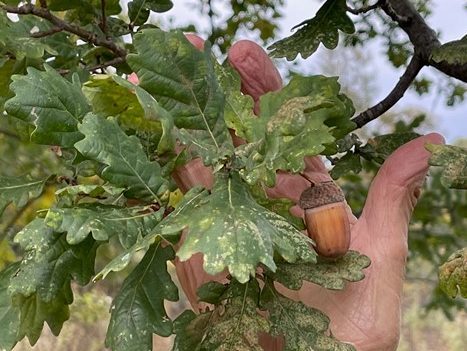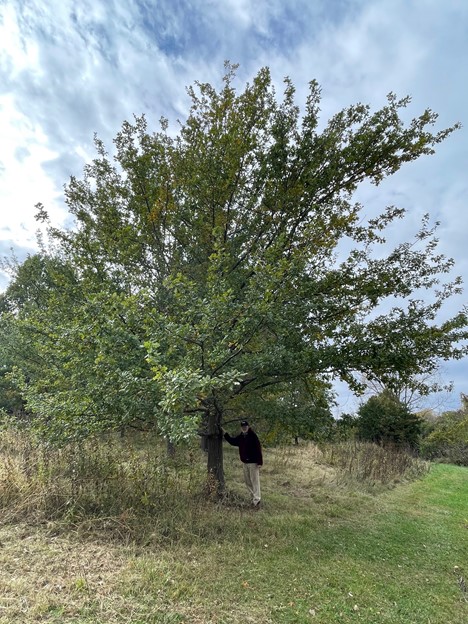The English Oak
The English oak is native to Europe and formerly played an especially important role in the economy and livelihoods of the British. It was an excellent wood for shipbuilding, which allowed the English to manage its empire of colonies around the world.
The large acorns were often abundant enough that farmers would herd pigs into the woods in autumn to fatten up. In some of the shires the acorn crop was a basis for taxation. The taxman would walk the woods with a square yard quadrat frame and toss it onto the ground randomly then count the number of acorns within the frame. When repeated enough it could yield a good estimate of the crop.

This species is fairly easy to identify. The acorns are noticeably elongate and have a little smooth cap that only covers the top quarter of the nut. The acorn stem is rather long, often several inches.


The leaves of the English oak tend to be small and abundant. The rounded tips of the individual leaves identify it as being a member of the white oak family. The leaf stems are very short and the leaves tend to be dark green on top and a paler grayish green or blue-green below.
The English oak has been extensively selected for by the landscaping industries of Europe and the US. Michael Dirr mentions in his massive tome, the “Manual of Woody Landscape Plants,” that in 1985, a checklist of English oak cultivars had “117 valid cultivars tagged to this species.” There are no doubt many more today because novelty is marketable, “be the first in your neighborhood to have ___.”
The first time that I encountered the English oak only in leaf I just thought that it was a mutation of our native white oak. It wasn’t until I visited one with acorns that I realized it was a different species.

Oaks are well known to cross breed freely with other oaks in their same group, and hybrids are common. So I anticipate that hybrids between the English oak and our native white oak are already out there and just go unnoticed regarding having mixed parentage. It can probably also hybridize with bur oak, swamp white oak and other species in the white oak group.
The 1979 “Checklist of United States Trees” documents 74 supposed oak hybrids, some of which have taken on a life of their own and are propagating others like themselves, becoming more widespread. Perhaps we are seeing the evolution of new species. And as more Eurasian oak species are imported for landscaping, oak taxonomy is only going to become more complex.


